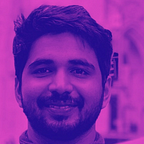Get out of the building & Get close to your customers
A lot of products fail. Research shows that about 60 to 80 percent of products fail. Is that because the founders lack the understanding of the customer?
You will not get it right the first time. There’s going to be a lot of iterations. You’re going to fine tune your business model over and over again as you discover more needs from your customers. Sometimes, you’ll make a full pivot from what you thought the business model would be in the first place.
Customer development is a framework developed by Steve Blank as part of his Lean Tech 21st Century Startup. It favors experimentation over elaborate planning, customer feedback over intuition, and iterative design over traditional “big design up front” development. It starts with searching for a viable, scalable, repeatable business model and executing on that business model while validating your hypothesis.
Customer development has four different phases:
Customer discovery- During this phase, you harness your vision to create a series of hypothetical business models and create a strategy to test and validate those hypotheses with real customers — (progress over process)
Customer validation- During this phase, you examine the scalability and repeatability of the viable hypothesis — (progress over process)
Customer creation- Access the market by building demand and awareness for your solution through activation of sales channels — (progress over process)
Company building- This is when you get out of the start-up mentality and move to a more ongoing execution focused business — (process over progress)
“Get closer than ever to your customers. So close that you tell them what they need well before they realize it themselves.” Steve Jobs.
Despite what people think, Steve Jobs didn’t have a crystal ball, where he can look in and say — I know what customers need before they even know it themselves. What he did was, he got closer to the customers. That’s how he found out the customer needs and then address those needs with delightful solutions.
For example, if you’re sitting in a restaurant and you look across the restaurant and see someone by themselves sitting down and eating breakfast. You could look at them and think to yourself, oh they’re here, 6 AM, probably because they’re hungry, they need breakfast.
Imagine you got up and walked over to them and sat down and engage with them. Maybe you’d find out that they have to be here at 6 o’clock in the morning every day because they have a certain dietary requirement. Maybe they have a medical condition, maybe this restaurant is the only place that cooks the food they need.
When you engage with the customers, you find out the underlying need.
You will understand about their motivations to progress (next milestone).
In the beginning, you get to hear diverse stories from your potential customers. After 50 or more interviews, you see patterns in their stories. You will see insights and then you build a more viable solution that aligns with your core product vision and addresses your customer’s genuine need.
Design Thinking also focuses on understanding the needs of potential customers. It doesn’t start with a founder’s vision and a product in-hand. Instead, it starts with “needs finding” and attempts to reduce new product risk by accelerating learning through rapid prototyping.
